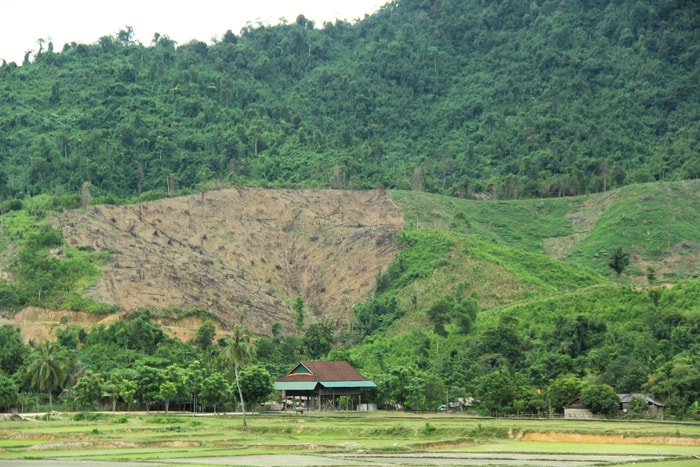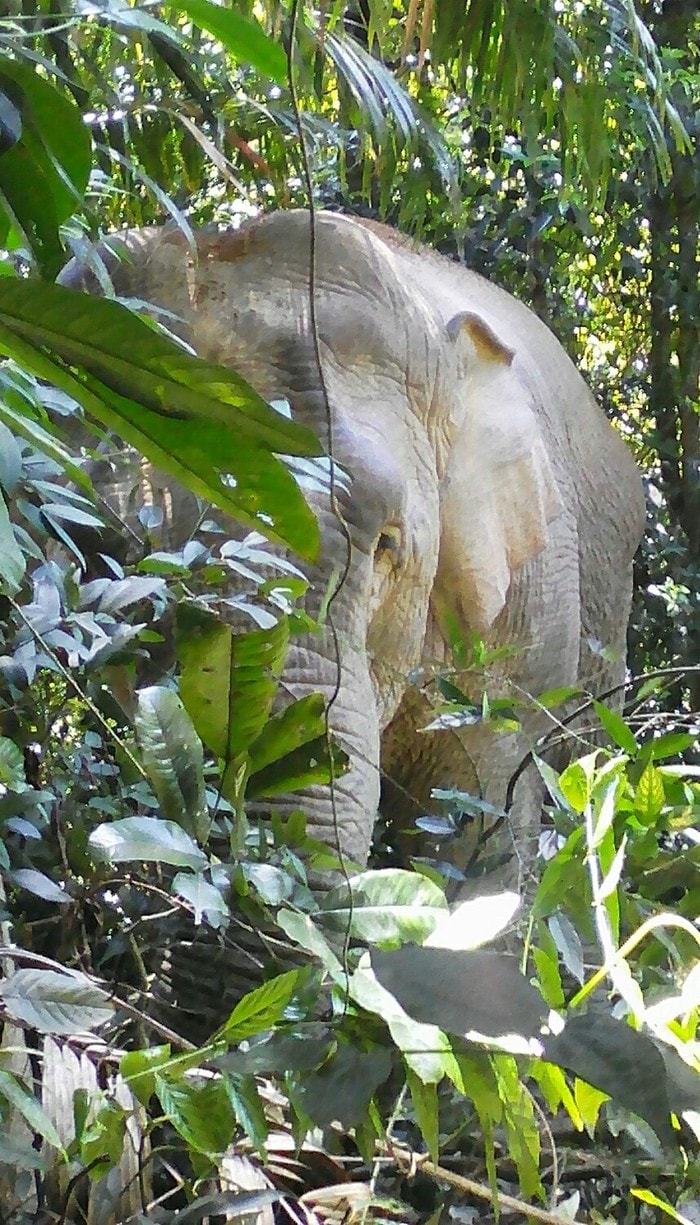Struggling to find solutions to protect wild elephants
(Baonghean) - Faced with the serious decline in the number of wild elephants, Vietnam has set a goal of preserving and sustainably developing wild elephant populations in three regions. Nghe An is one of three provinces with an elephant conservation project approved by the Prime Minister, but so far, implementation has encountered many difficulties, especially the problem of moving individual elephants.» When the wild elephant gets angry
» Following the wild elephants in Western Nghe An
» When the wild elephant gets angry
In 2010 - 2011, within just 19 months, more than 10 wild elephants were found shot dead in Nghe An, Dak Lak and Dong Nai provinces. The number of elephants in Vietnam, including domesticated elephants and wild elephants, is facing the risk of extinction. The situation is so urgent that Mr. Scott Roberton - Country Director in Vietnam of the Wildlife Conservation Society, at that time had to warn that "at this rate of killing, elephants will become extinct in Vietnam within the next 10 years".
Faced with this situation, in May 2013, the Prime Minister approved the Master Plan for Elephant Conservation in Vietnam for the period 2013 - 2020 with a total investment of over 280 billion VND. In particular, Nghe An is one of three priority areas for conservation and sustainable development of wild elephant populations. This project aims to prevent and stop hunting, harming elephants as well as illegal encroachment into elephant conservation planning areas; prevent conflicts between elephants and humans, protect the habitat and movement corridors of elephants in the wild...
 |
| Cao Veu 1 Village (Phuc Son Commune, Anh Son) used to be a bamboo forest where elephants lived. Photo: Tien Hung |
In this project, one of the urgent tasks is to plan and organize the relocation and re-herding of individual elephants. However, to date, the authorities have not yet found an effective solution to relocate elephants.
“These elephant herds have absolutely no chance of developing, and they will die in the near future. Meanwhile, moving is too difficult,” said Mr. Tran Xuan Cuong, Director of Pu Mat National Park. In Nghe An, there are 6 elephant herds, of which 4 have only one individual living independently; of which 2 are female elephants that often have conflicts with humans.
One day in early August 2016, Ms. Luong Thi Hoa (Chau Khe commune, Con Cuong) was shocked to discover that her family's buffalo herd, which usually roamed freely in the forest's edge, was missing its male buffalo. She immediately called on the villagers to search for it. Deep in the forest, the villagers discovered the buffalo standing next to a large female elephant.
“It kept the buffalo there, not letting it go anywhere. Many people came close to take pictures, but it showed no signs of fear. A few hours later, it finally left so Ms. Hoa could take the buffalo home,” said a local who participated in the search. This is a female elephant that has lived alone for more than 20 years in the center of the park. Previously, this herd had at least one pair, but in 1996, the male elephant was killed.
“Through observation in the ear cavity, we know that this elephant is still at reproductive age. During the mating season, without a male, it becomes more aggressive. Each time like that, it often leaves the forest to look for people's buffalo herds. Especially the big male buffaloes,” said Mr. Cuong.
Pu Mat National Park has also considered the option of merging this single elephant with the two herds living in the park. However, the journey from this area to the elephant herd in the Northwest of Pu Mat takes 2 days, crossing many rivers and streams, so this seems impossible. Meanwhile, the Giang River is also preventing this female elephant from reaching the herd of 6 elephants in the Southeast of the park.
In the same lonely situation is the ferocious female elephant in Pu Huong Nature Reserve, which often comes to harass villages in Bac Son Commune (Quy Hop). Mr. Luong Van Kinh - Secretary of Bac Son Commune Party Committee said that this herd used to have dozens of elephants. "In the early 90s, this herd still had 6 to 7 elephants. But then they could be killed or left somewhere, only this one elephant is left alive," Mr. Kinh added.
Living alone for many years, seemingly sensing the presence of elephant herds on the other side of Pu Mat, the female elephant was recorded many times crossing the long forest to search for her kind. However, when reaching Anh Son district, it was stopped by the Lam river. Following the footprints, the rangers recorded that each time the female elephant in Quy Hop and the elephant in Pu Mat center moved to Giang and Lam rivers to search for their kind, the herd of 6 elephants in Southeast Pu Mat also tended to come to this area. However, the deep river prevented them from merging.
According to Mr. Tran Xuan Cuong, the solution to move a single elephant usually uses anesthetics, however, for Vietnam's terrain, this method is not suitable. "Currently, there are two types of anesthetics: fast-acting and slow-acting. The fast-acting type will cause the elephant to become unconscious immediately after being shot, which will seriously affect the elephant's health. Especially in steep mountainous terrain, who knows, after being shot, the elephant might collapse and fall into a ravine or roll down the slope to die. The second type takes effect after about 25 minutes. If this type is used, after being shot, the elephant will panic and run into the deep forest. Thus, it will be difficult for the shooters to catch up and know where it will be taken down. Sometimes they can't find it all day, and when they do find it, they have to destroy the forest to make a road to take it away. It is very costly. Not to mention, on the way to escape after being shot with the anesthetic, the elephant may be in danger," said Mr. Cuong.
 |
| Lone female elephant at Pu Mat Center. Photo: provided by local people |
During the mating season, elephants are easily paired. However, on other days of the year, they often tend to conflict with strange elephants. This is also one of the concerns of wildlife conservation experts when it comes to the issue of merging elephant herds. Not to mention, elephants will also die if the new habitat is not suitable. In fact, in Vietnam, there have been two failures in moving elephants. That was when the elephant herds in Tanh Linh (Binh Thuan), and Binh Chau - Phuoc Buu (Ba Ria - Vung Tau), were moved to Dak Lak. They then quickly died for many reasons, mainly due to exhaustion and unsuitable living environment.
Although it is assessed that there are sufficient conditions to increase the number of elephants, since being planned to be in the 3 priority areas for elephant conservation, the number of elephants in Nghe An has not increased. The last time the authorities recorded an elephant giving birth was 7 years ago, in the Southeast of Pu Mat. However, after the leading male elephant was killed at the same time as the baby elephant was born, the herd has remained at 6 elephants until now.
“Although there are still two males in the herd that are about to reach adulthood, elephants are very wary of inbreeding. We are trying to merge the female elephant in Quy Hop and the one in Pu Mat center with this herd by luring them to shallow water sections to cross Giang and Lam rivers. However, this work will certainly be very difficult and costly,” said the Director of Pu Mat National Park, and Deputy Manager of the Nghe An Elephant Conservation Project.
Vietnam once “lost” in the “war” to protect the one-horned rhinoceros. On April 29, 2010, the body of the last rhinoceros was found. It was shot down by poachers in Cat Tien National Park for its horn. This was sad news for the conservation sector in Vietnam, as only about 20 years ago, there were still about 15 rhinos living in this national park. The bullet holes have permanently destroyed a part of the natural heritage, a symbol of biodiversity value in Vietnam. Therefore, perhaps it is time for agencies, sectors and the community to join hands to protect the animals that are on the brink of extinction in Vietnam. And the elephant - an animal closely associated with culture and many historical achievements of the nation - is also in that situation.
To preserve and reduce conflicts between humans and elephants in the area, authorities in Nghe An have proposed a number of solutions, including establishing rapid response teams in localities where elephants frequently appear to support people when conflicts occur; supporting people with economic losses caused by elephants; propagating and training to raise awareness about elephant conservation and how to avoid conflicts with elephants; protecting long-term habitats for elephant herds; building economic development models that combine conflict prevention with elephants and humans such as beekeeping and rattan planting; proposing to the General Department of Forestry to find solutions to move single elephants to new locations...
Tien Hung


